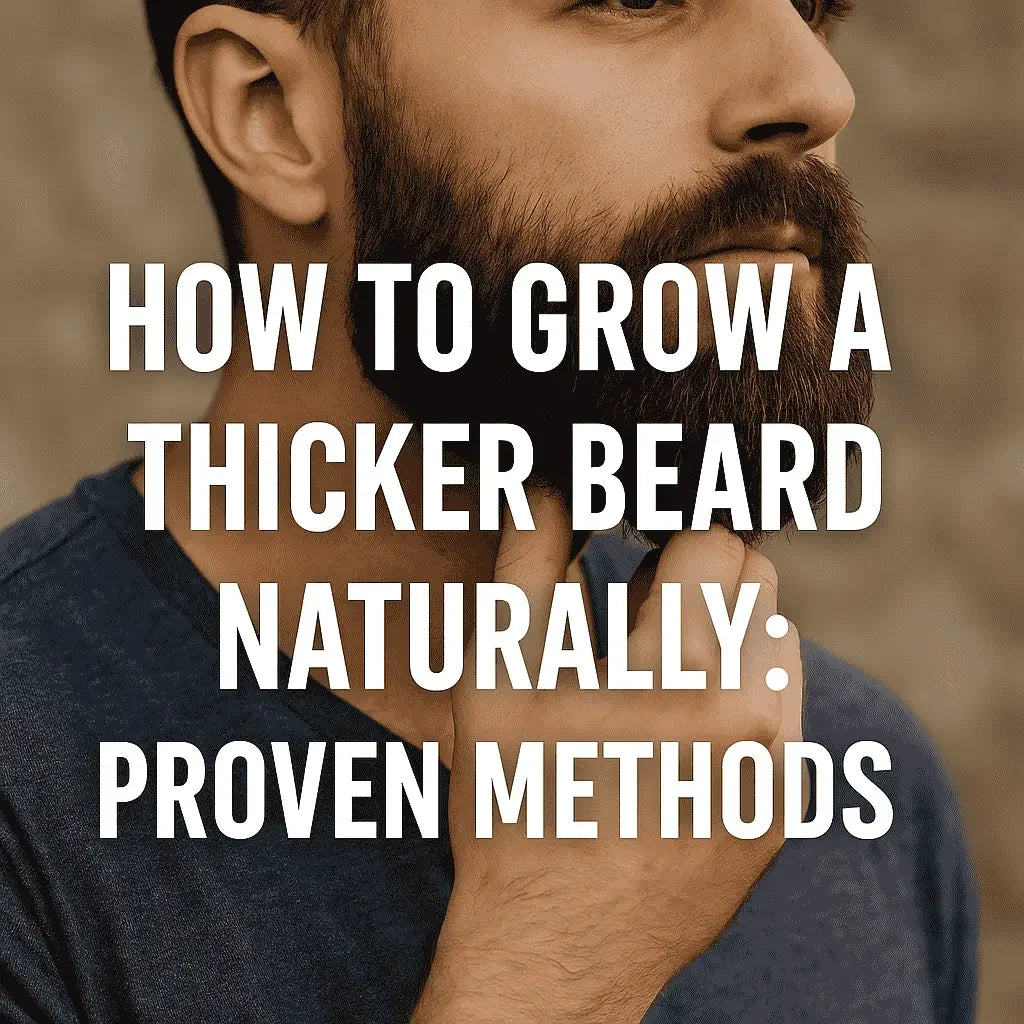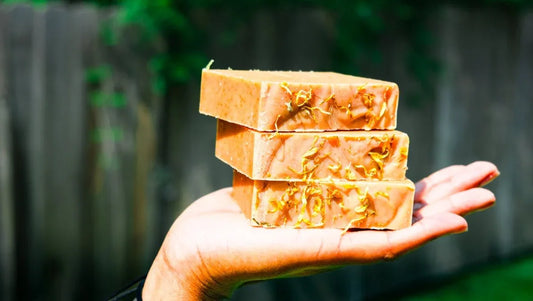
How to Grow a Thicker Beard Naturally: Proven Methods
So, you're finally ready to unleash your inner lumberjack and let that facial hair flourish, huh? Whether you're starting from scratch or trying to upgrade your patchy beard into a thick, majestic mane, you're in the right place. Growing a thicker beard naturally is all about knowing your body, using the right techniques, and sticking to a consistent routine. There’s no overnight magic here—but with a little patience and the right tools (hello, beard oils), you can absolutely transform your facial hair game.
Ultimate Guide: How to Grow a Beard Naturally and Faster
Beards are more than just a trend—they’re a statement. From rugged stubble to full-grown grizzly, your beard reflects your style and even boosts your confidence. But many guys get stuck wondering how to grow a beard in the first place. Genetics, hormones, stress, diet, and grooming all play a role. But the good news? You have way more control over your beard growth than you think.
In this guide, we’ll cover everything—from what foods help grow facial hair to how to use a beard roller to the truth behind "how to grow beard faster" myths. You’ll find natural tips, science-backed strategies, and our top product recommendations from The Spiritual Affinity Beard products. Whether you're aiming to regrow facial hair or simply looking for proven ways to grow more facial hair, this is the complete guide you've been waiting for.
Key Factors Affecting Beard Growth
Before we get into the "how," let’s talk about the "why." Why does beard growth differ so much between guys? Why does your buddy have a full beard at 18 while you’re struggling with wisps at 25? It all boils down to a mix of genetics, hormones, and lifestyle.

Genetics and Hormones
First off, your genes are the MVPs here. If your father or grandfather had a thick beard, chances are good you’ve got the potential, too. The primary hormone responsible for facial hair growth is Dihydrotestosterone (DHT), a derivative of testosterone. The more sensitive your follicles are to DHT, the thicker and quicker your beard will grow. Unfortunately, you can’t change your DNA—but you can optimize your hormonal health with sleep, nutrition, and stress management.
Lifestyle Habits That Impact Facial Hair Growth
Your lifestyle choices play a bigger role than you might think. Smoking, poor diet, high stress, and lack of sleep can slow down or even stunt beard growth. On the flip side, clean living can help you grow facial hair faster. We’re talking high-protein meals, healthy fats, regular exercise, and enough rest.
Also, skincare matters a lot. Clean, exfoliated skin with good circulation creates the perfect environment for hair follicles to thrive. So, if you're wondering how to grow chin hair or fill in patchy spots, start with healthier skin.
Now that you understand what’s influencing your beard growth let’s explore actionable strategies to get results—naturally and effectively.
How to Grow a Beard Naturally
Growing a beard isn’t just about waiting and hoping—it’s a process that starts from within. If you’re committed to learning how to grow a beard the natural way, the first thing you need to focus on is skincare and hygiene, followed by a nutrient-rich diet that fuels hair growth. When you care for the skin beneath your beard, you’re setting a strong foundation for thick, healthy facial hair.
Proper Skincare and Beard Hygiene
Imagine trying to plant grass on a dry, cracked lawn. That’s what trying to grow a beard on dry, flaky, or dirty skin is like. Healthy skin = healthy beard. Start with daily cleansing using a gentle, non-comedogenic face wash. Follow up with exfoliation 2-3 times a week to remove dead skin cells that might block hair follicles. Hydration is key, too, so don’t skip moisturizer.
One of the most underrated steps in beard hygiene is using the right beard oils. Natural beard oils like the ones from The Spiritual Affinity do more than just make your beard smell good. They nourish the skin, reduce itchiness, and promote blood flow to your follicles. Beard oil is especially helpful in the early stages when your skin might feel irritated as hairs poke through.
Hygiene doesn’t end there. Comb your beard daily to prevent ingrown hairs and improve circulation. Wash your beard 2-3 times per week with a beard-specific shampoo—not your regular head shampoo, which can be too harsh and strip away essential oils.
Nutrition for Beard Health
Your beard is what you eat—literally. Just like any other hair on your body, your facial hair thrives on vitamins, minerals, and protein. Foods high in biotin, zinc, vitamin D, and B-complex vitamins are especially helpful. Think eggs, salmon, nuts, leafy greens, and avocados.
Also, stay hydrated! Drinking enough water helps your skin and follicles function at their best. Add a multivitamin if you’re struggling to hit your daily nutrient goals. A strong beard starts with a strong body, and fueling it right makes a huge difference if you're trying to grow facial hair naturally.
Proven Ways to Grow More Facial Hair
Now, let’s talk action steps. You’ve laid the groundwork with good skincare and a proper diet. Now, it’s time to dive into the tools and techniques that truly accelerate growth.
Use of Beard Oils and Natural Products
There’s a reason beard oil is a staple in every serious beard grower’s routine—it works. But not all oils are created equal. Look for products with natural, growth-enhancing ingredients like castor oil, jojoba oil, argan oil, and vitamin E. These oils hydrate the skin, unclog follicles, and boost blood flow—all of which are essential for hair growth.
We recommend using Imperial Beard Oil (Lavender Lime) or Cedarwood Frankincense Blend from The Spiritual Affinity for maximum effectiveness. Not only are they organic and USA-made, but they also come with calming, masculine scents that make your grooming routine something to look forward to.
Massage a few drops into your skin daily—preferably after showering when your pores are open. Consistency is key. Within weeks, you’ll likely notice improved texture, reduced itchiness, and better coverage, especially in sparse areas.
Benefits of Beard Roller and Micro needling

Let’s talk tech—specifically, the beard roller. Also known as a derma roller, this tool uses tiny needles to create micro-tears in the skin. That might sound scary, but it’s not. These micro-injuries stimulate collagen production and increase blood flow, which encourages dormant hair follicles to start producing hair.
Use the beard roller 2-3 times per week, followed by a nourishing beard oil. Don’t overdo it—your skin needs time to heal between sessions. Make sure the roller is sterilized and the needle length is suitable (0.25 mm is usually safe for beginners).
Microneedling has been shown to trigger beard growth in patchy areas, making it one of the most proven ways to grow more facial hair without chemicals or prescriptions. It’s a game-changer, especially when combined with other natural methods.
How to Grow Beard Faster with Daily Routine Changes
This one’s a biggie. You can use all the oils and tools in the world, but if your daily habits are out of whack, your beard growth will suffer. Let’s look at some small but powerful changes you can make right now.
Sleep, Stress Reduction, and Physical Exercise
Sleep is when your body repairs itself and produces the most testosterone. Aim for 7–9 hours of quality rest every night to give your beard a hormonal boost. Also, learn to manage stress. Chronic stress increases cortisol levels, which lowers testosterone and, you guessed it, slows down beard growth.
Exercise regularly, especially during resistance training like weightlifting. It not only improves circulation but also raises your natural testosterone levels, helping you grow a beard faster and thicker over time. Cardio has its place, too; just don’t overtrain and burn out.
Facial Massage and Exfoliation Techniques
Massaging your face stimulates hair follicles and boosts blood flow, feeding them with oxygen and nutrients. You can do this while applying beard oil or even during your skincare routine. Use circular motions with your fingers, or invest in a silicone facial scrubber for deeper stimulation.
Exfoliating twice a week is another important step. It removes dead skin, helps prevent ingrown hairs, and unclogs pores, so your facial hair has a clear path to grow. Use a gentle exfoliator—preferably one with natural ingredients—and follow it up with a good moisturizer or beard oil.
The combined impact of sleep, stress control, movement, and grooming rituals may seem simple, but they’re incredibly effective over time if you’re aiming to grow facial hair naturally and healthily.
Conclusion
Growing a thicker beard naturally is not just about genetics—it’s about consistency, care, and using the right methods. From proper skincare and targeted beard products to natural remedies and lifestyle improvements, every small action contributes to better facial hair growth. So, if you’ve been asking yourself how to grow a beard or how to grow facial hair faster, the answer lies in taking daily steps that nourish your body, stimulate your follicles, and create a healthy environment for growth.
Remember, you don’t need to chase after miracle cures or sketchy pills.
FAQs
1. How long does it take to grow a beard naturally?
Most men will start to see noticeable beard growth within 4 to 6 weeks of consistent care, but a full, thick beard may take anywhere from 3 to 6 months, depending on genetics and routine. Patience and persistence are key.
2. Can I grow a beard if I have no facial hair at all?
Yes, it’s possible—but results will vary depending on age, hormone levels, and genetics. Focus on optimizing your health, using natural products, and possibly incorporating a beard roller to stimulate dormant follicles.
3. Do beard rollers really work?
Absolutely. Beard rollers work by triggering collagen production and increasing blood circulation to hair follicles. When used correctly with beard oils, they can significantly improve patchy growth and thickness over time.



